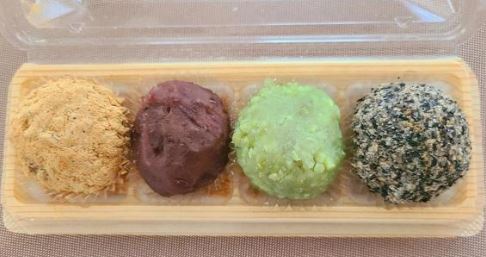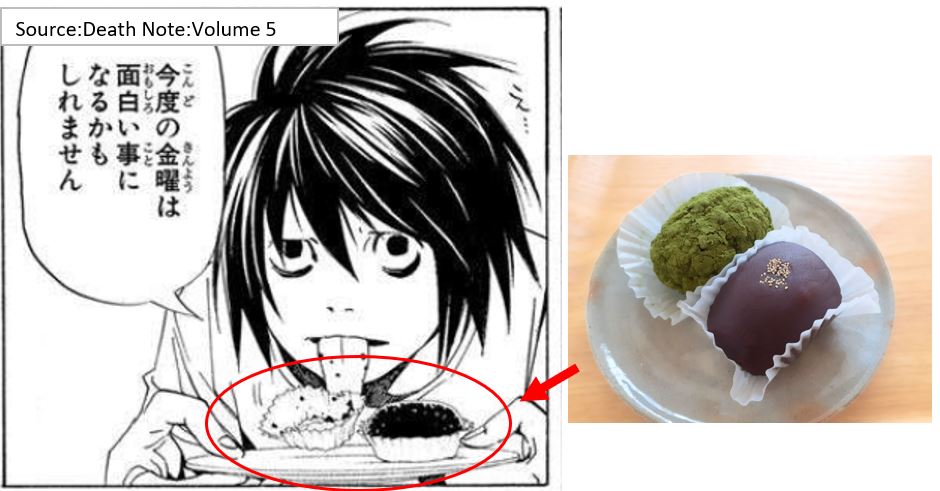In “Death Note,” the main character, L, is known for his love of sweets. We often see him investigating Kira while enjoying various confections. From his dialogue, it’s clear that L believes sugar is crucial for the brain’s energy, suggesting that his intellect requires substantial amounts of sugar.
Among the sweets featured in the series, there are traditional Japanese confections that may be unfamiliar to people abroad. In this article, I’ll introduce one such sweet: ohagi.
In “Death Note,” Japanese wagashi (traditional sweets) like ohagi, yokan, and anmitsu make appearances. Here, I’ll focus on introducing ohagi, a sweet that may not be familiar to those outside Japan.
What is Ohagi
In Death Note volume 5, there’s a scene where “L” is seen eating ohagi, a traditional Japanese wagashi, while investigating Yotsuba Corporation.
Ohagi is a traditional Japanese sweet made from glutinous rice and sweet red bean paste. The process involves cooking glutinous rice and then forming it into small balls, which are coated with a layer of sweet red bean paste. Sometimes, the outer layer may also be sprinkled with kinako (roasted soybean flour) for added flavor. Its soft texture and subtle sweetness make it a delightful treat enjoyed by many in Japan.”
Meaning of Ohagi for Japanese
Ohagi is often associated with the elderly or rural areas, with younger generations less inclined to eat it.
Beyond being a tasty treat, ohagi holds cultural significance as it’s frequently offered to ancestors during Buddhist memorial services. Unlike in Christianity, where the concept of the afterlife differs, in Japan, it’s believed that the spirits of the deceased reside in their graves, so people visit graves regularly. They not only remember the deceased but also clean the graves (picking up trash, polishing the tombstones) and offer flowers and other items. Ohagi is often chosen for these occasions because it’s made with azuki beans, whose red color symbolizes protection against evil spirits.”
Varieties of Ohagi
There are various types of ohagi depending on the region. Here are some well-known varieties:
Kinako Ohagi: Ohagi coated with kinako (roasted soybean flour). The nutty aroma of kinako enhances the texture and flavor, making it richer.
Goma Ohagi: Ohagi coated with ground sesame seeds. The distinctive flavor of sesame adds richness and nuttiness.
Zunda Ohagi: Ohagi wrapped with a layer of zunda, a green paste made from mashed edamame beans. It offers a flavorful and creamy taste.




